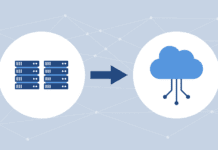Tape storage technology has been dying for many years — if you believe disk backup vendors like EMC (NYSE: EMC). Yet the rumors of its demise continue to be exaggerated.
Greg Schulz, an analyst with StorageIO Group, points to the imminent release of LTO-5, the latest version of the Linear Tape Open format (LTO), the overall viability of LTO, and the fact that LTO-6 is already in the works as sure signs that tape has a long shelf life.
“It is a myth that tape is dead,” said Schulz.
And like zombie movies that many thought would die out decades ago, tape continues to do well at the box office.
“The $3.5+ billion tape market continues to thrive in the data protection market, no longer just for data backup but also for online data archives,” said Molly Rector, vice president of worldwide marketing and product management at Spectra Logic Corp.
The release of generation five of the Linear Tape Open format is set to unleash further legions of the undead upon unsuspecting data center managers. Known as LTO-5 by most, it is formally called LTO Ultrium format generation 5 — Ultrium is the name of the tape cartridge format, but few seem to use it outside of official announcements by the LTO consortium. Put together by HP (NYSE: HPQ), IBM (NYSE: IBM) and Quantum (NYSE: QTM) to bring about more tape standardization and to advance tape cartridge technology, the consortium is releasing the specs on LTO-5 and soliciting licensing deals from data storage vendors prior to the official release “later in the year” — widely believed to be by the end of this quarter.
“LTO-5 should be with us in March/April 2010,” said Rector.
LTO-5 Specs: More Speed, Capacity
LTO-5 hikes the speed up to 180 Mbps and capacity to 1.6 TB in native form (not compressed). The compression ratio in LTO-5 tape format will be 2:1, which is the same for all earlier versions. Compared to LTO-4, generation 5 doubles the capacity and boosts the speed by another 50 percent.
In addition to consistent bumps upward in speed and capacity, each version brings in new features. LTO-3 brought in WORM (write once, read many), encryption in LTO-4, and now partitioning is being brought in for LTO-5.
“The generation 5 specifications are designed to reflect the current and future needs of data managers worldwide while adding new features, such as partitioning, to enable additional control and efficiencies via space management,” said Rob Clark, vice president of business operations at Quantum Corp.
Mike Karp, an analyst with Ptak, Noel and Associates, pointed out that LTO-5 is backward compatible with both LTO-3 and LTO-4; LTO-5 devices can read LTO-3 media, and can both read and write to LTO-4 media. Note, however, that the earlier generations of hardware will not be able to read LTO-5 media. So a move to LTO-5 tapes means, at the very least, that all tape drives will have to be swapped out.
How does it compare to competitive offerings?
“The specs for LTO-5 clearly outdistance the Sony Tape offerings in everything but compression ratio,” said Karp.
That said, he doesn’t anticipate LTO-5 changing anything on the mainframe tape market, where LTO has historically had little to no play.
Schulz sees LTO-5 as stimulating the LTO-4 marketplace.
“Granted, initially the media cost of LTO-5 will probably be higher until volume picks up, however that could also enable bargains for LTO-4,” said Schulz. “What makes this interesting is that many LTO users skip a generation: They go from LTO-1 to LTO-3 to LTO-5, or, LTO-2 to LTO-4 to LTO-6, while others may have a mix of LTO levels leveraging backward compatibility while boosting density and cost advantages.”
He sees LTO-5 as an easy sell: If data demands have doubled, a single LTO-5 device and media would do the work of two LTO-4 tape drives. If, on the other hand, data rates or volumes are flat, jumping from LTO-4 to LTO-5 can help to reduce the number of devices and drives for performing backup while meeting service requirements.
“Of course the benefits are greater when going from LTO-3 to LTO-5,” said Schulz. “For those that need the speed or performance, LTO-5 is a good option for early adopters, while helping to make more LTO-4 viable for others who can wait.”
He said the impending release of LTO-5 will be good for the entire tape ecosystem: media vendors like Fujifilm and Imation (NYSE: IMN), as well as drive, tape library and assorted systems vendors like HP, IBM, Quantum, Sony, Spectra Logic and Sun (NASDAQ: JAVA). even for non-LTO vendors who are enhancing their technologies, it will indirectly help by demonstrating the continued investment and enhancement to tape.
“In the case of Sony, they have had an “on again, off again” focus on data centers, and SMB and SOHO along with consumer markets are gravitating towards disk-based solutions,” said Schulz. “However, where Sony still has a play is in the non IT-space such as video-related, where digital recording continues to consume large amounts of tape media.”
And new research announced today suggests that tape innovation will continue far into the future.
IBM and Fujifilm scientists have recorded data onto an advanced prototype tape at a density of 29.5 billion bits per square inch. The next-generation dual-coat magnetic tape based on barium ferrite (BaFe) particles could enable cartridge capacities that hold up to 35 terabytes of uncompressed data — that’s more than 20 times greater than the capacity of LTO-5 drives.
LTO-5 Offerings Planned
As one of the prime movers behind LTO, Quantum is enthusiastic about the latest and greatest. After all, the company is one of the biggest players in the tape landscape through its Scalar line of tape libraries. Quantum highlights the strong ROI equation for upgrading from older technologies: significant media savings and reduced backup times for users without increasing the current footprint.
Ryan Duffy, automation product marketing manager, said Quantum plans to offer LTO-5 as a standalone tape drive for its autoloaders and iLayer tape libraries.
“Our plan is to make LTO-5 widely available to our customers, including current and some legacy automation platforms,” he said. “As we get closer to launching the tape drive, Quantum will announce availability on specific tape platforms.”
Similarly, Spectra Logic is fitting out its entire T-Series tape library family to support LTO-5. Pre-purchase programs are available now, enabling clients to receive LTO-4 today and be upgraded to LTO-5 as soon as is available.
“All Spectra T-series libraries, which started shipping in 2004, are upgradeable to LTO-5,” said Rector. “The upgrade can be done in the data center in minutes.”
She expects LTO-5 to continue the trend of making tape-based active file archives the long-term data storage system of choice for enterprise data centers. In that way, users can access petabyte storage archives through one file system interface — a far cheaper alternative to maintaining archives on disk.
“The release of LTO-5 is yet another landmark in proving the need for tape in the data center,” said Rector.
Follow Enterprise Storage Forum on Twitter





